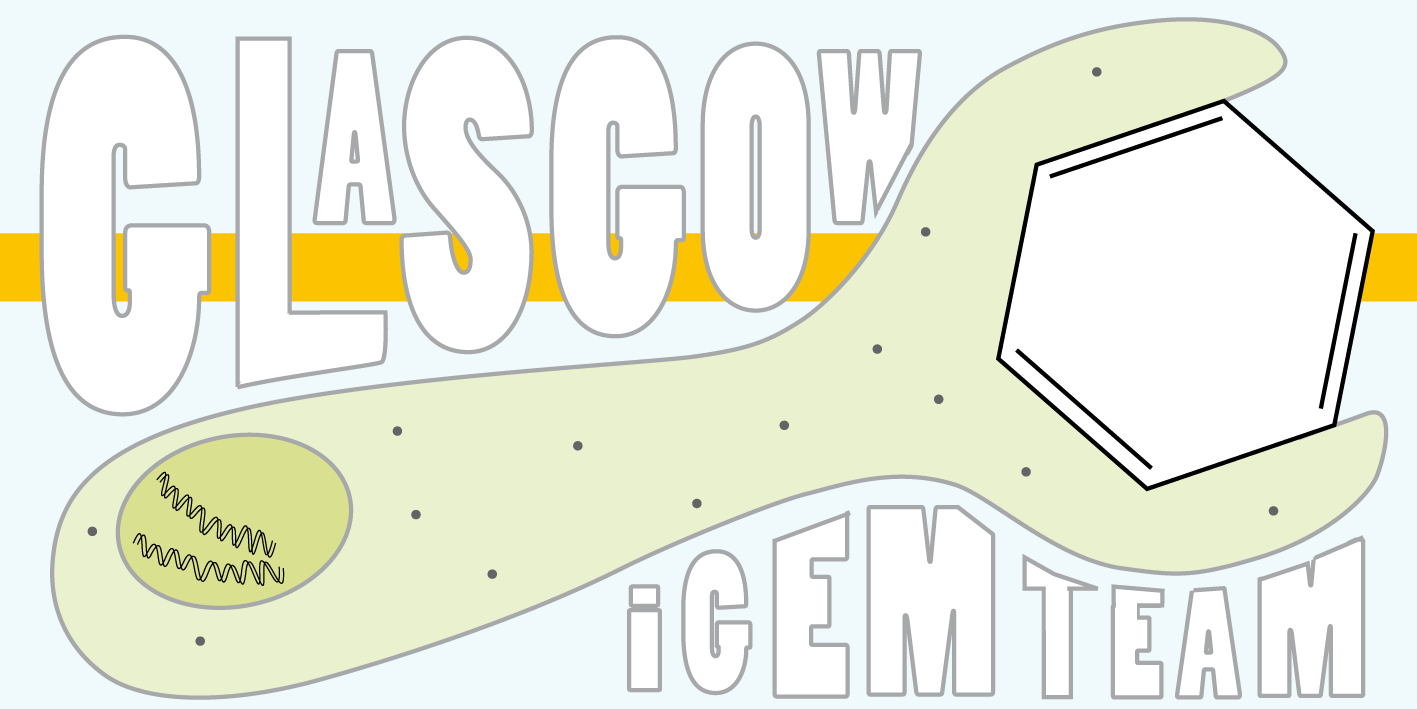Glasgow
From 2007.igem.org
| Line 1: | Line 1: | ||
{| cellspacing="6px" cellpadding="10" border="0" width="100%" | {| cellspacing="6px" cellpadding="10" border="0" width="100%" | ||
| - | |||
|-align="center" | |-align="center" | ||
|[[Image:Goals.png]] | |[[Image:Goals.png]] | ||
Revision as of 17:02, 15 August 2007

A wee bit about our project....
Large amounts of pollutants enter the environment each year. Biosensors are often used for the detection of environmentally relevant pollutants in both groundwater and soil. Our current work involves the use of new Biobricks that we have designed, in conjunction with existing Biobricks in order to design and create two biosensor systems that detect xylene and salicylate respectively.
In these systems, the pollutant forms a complex with a constitutively expressed transcriptional regulator, which in turn drives the expression of proteins allowing the bacteria to metabolize or degrade the pollutant. By replacing the genes that encode these proteins with a reporter gene an easily detected signal, such as pH or colour change is produced, thus creating a biosensor.
The modeling team provides feedback to biologists. In silico simulations tend to be more flexible and quicker to complete than in vitro experiments, this allows us to guide our project more efficiently. First a common framework is decided upon that represents the desired biological system. This framework can then be interpreted in a number of ways which allow us to determine substrate concentration changes over time with respect to acknowledged parameters and initial concentrations (these may be found in literature, obtained experimentally or arbitrarily chosen).
Simple dynamic modeling will allow us to spot general qualitative and quantitative trends, stochastic representation will provide a more realistic simulation of the actual interaction on a molecular and cellular level, and various sensitivity tests will highlight how precise constraints on key components must be for a stable response. By analysing the system in this way, conclusions can be drawn to allow further evolution of the framework to optimise its performance according to predetermined specifications.
Links to our Sponsors
[http://www.gla.ac.uk http://ultragrid.east.isi.edu/images/glasgow-logo.png] [http://www.scottish-enterprise.com/ http://www.conscia.co.uk/images/logo/se.gif] [http://www.anachem.co.uk http://www.pro-4-pro.com/media/company/anachem_logo.jpg] [http://www.merck.com/ http://www.v2020.org/library-media/images/Merck.jpg] [http://www.ethz.ch/index_EN http://www.photogrammetry.ethz.ch/logos/eth-logo-140.gif]
